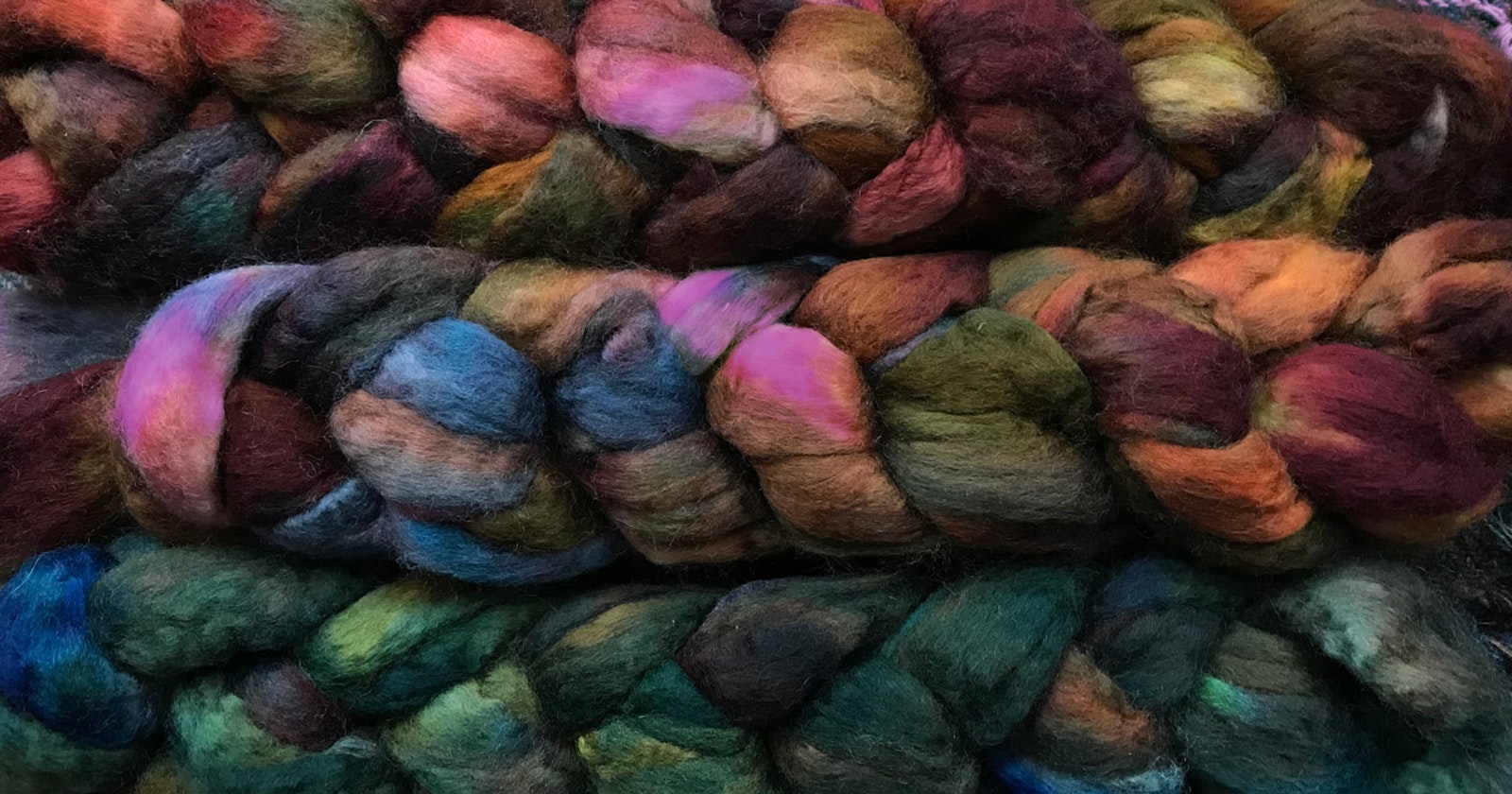| My first spinning teacher, Maggie Casey, was fond of telling us that the spinning police were not out to get us for every infraction. But what about yarns so deviant they’re called illegal?
That’s what Patsy Zawistoski calls them, anyway. These are yarns that break the most fundamental rule of spinning: that you spin in one direction and ply in the opposite. So where were the sirens and flashing lights when she pulled out a pile of luscious fibers and made some very daring yarns?
 | | | But Patsy, that’s . . . that’s . . . against the rules! | | These are yarns in which one ply is twisted Z, the other S, and then both are plied either Z or S. One of the plies gets tighter, the other looser, and both explode in a ball of fire.
It turns out that even though this yarn is made by breaking the first plying rule you ever learned, it has a few rules of its own.
• The “effect” yarn—the shiny, glossy, slubby, or otherwise—needs to be spun with a fairly firm twist, enough so that when it’s plied in the opposite direction, it will hold its own.
•The “binder” yarn—soft, woolen, long-draw—can be spun with much less twist because it will be tightened up in plying.
•When the two singles are combined, start by tying them with a knot—they will fight each other at first—and turn them in the same direction as the binder yarn was spun.
|  | | Rule-breaking yarns can be surprisingly useful, strong, and beautiful. | But it doesn’t sound like it can be stable, does it? Don’t the plies push each other around, fight, and generally cause confusion? Patsy explains that the yarns actually stay put very well, their opposing twists somehow locked together. The lovely spirals of this yarn, the pairing of soft and firm singles, and the combination of dramatically different fibers have all the hallmarks of an art yarn.
So whether you like to flout the rules, explore all the possibilities spinning has to offer, or simply make great yarns, maybe the way of getting there is to try making illegal yarns.
 | 